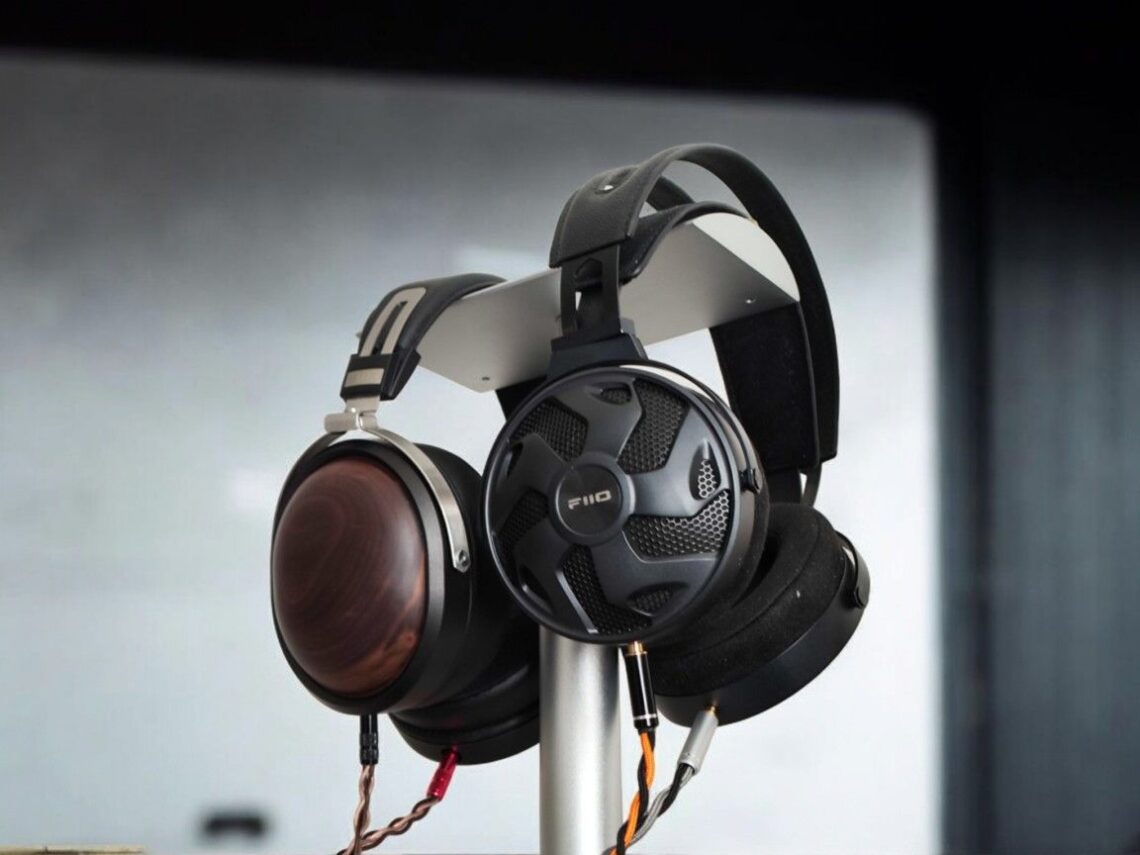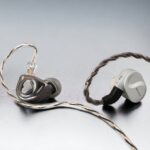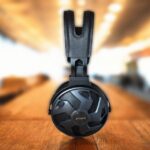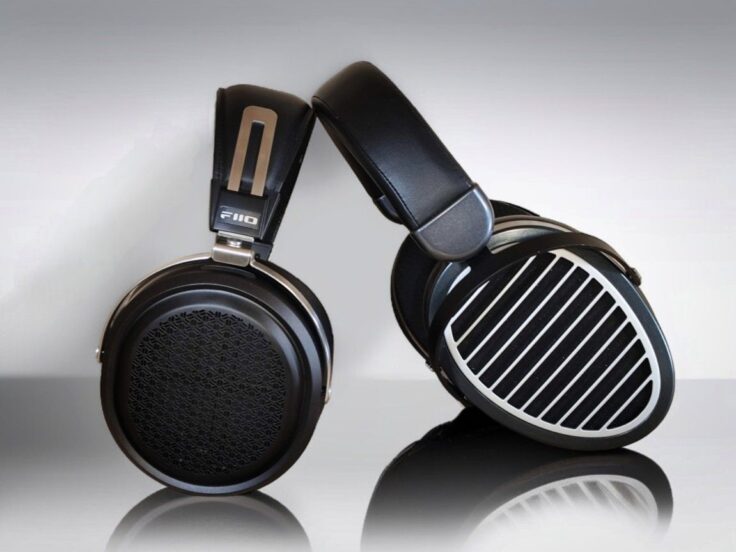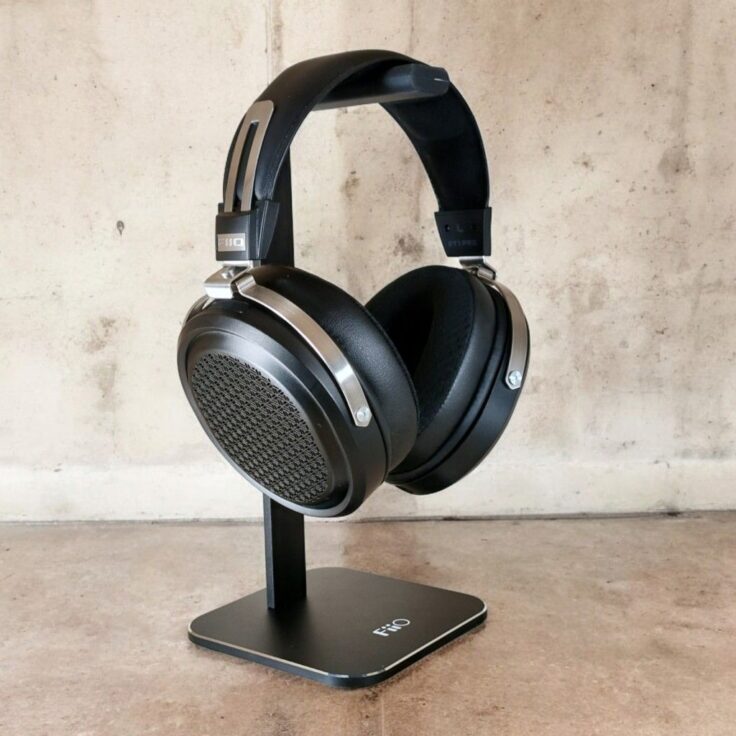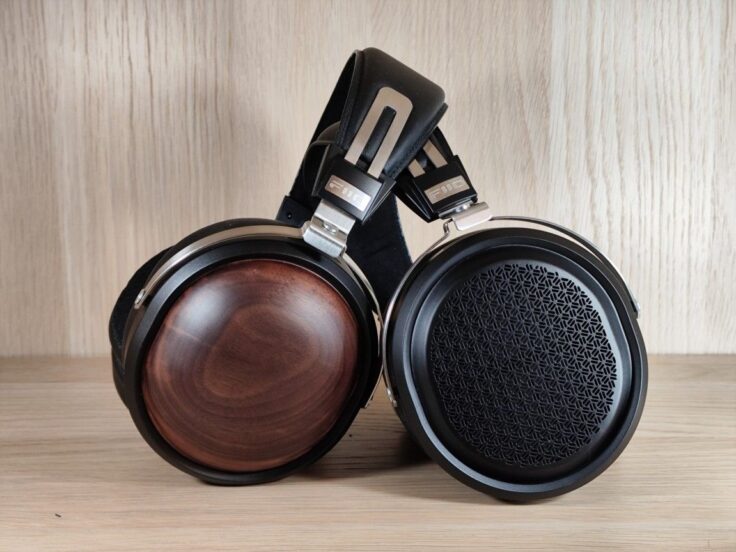FiiO ventured into the world of over-ear headphones as recently as in the spring of 2023 with the release of the 300-ohm dynamic driver FT3 ($299). Since then, they’ve expanded their headphones lineup with several models: The open-back planar magnetic FT5 ($449), a 32-ohm version of the FT3, the budget-friendly open-back JT1 ($69), and now, FiiO’s first wooden closed-back headphone, the FT1 ($149). In this review, we will compare the first FiiO headphone to the latest.
The FiiO FT1 and FT3 both feature dynamic drivers, but their designs differ significantly. Most importantly, the FT3 is an open-back headphone, the FT1 a closed-back. Further, the FT3 has a much higher impedance at 350 ohms compared to the FT1’s 32 ohms. Additionally, their diaphragms vary in material and shape: the FT3 uses a diamond-like carbon (DLC) diaphragm, while the FT1 employs a carbon-reinforced wood fiber diaphragm. However, both models share the same 60mm driver size.
The FT3’s open cups are made from aluminum alloy, giving it a premium feel while remaining fairly lightweight. I find it very comfortable to wear, though some might consider the ear cups and pads a bit small—this isn’t an issue for me. It comes with two pairs of ear pads, each offering distinct sonic characteristics. One pair is made of a synthetic suede-like material, while the other is a hybrid: suede-like on the inner side, protein leather on the face, and fenestrated protein leather on the outside. I’m unsure if the foam is the same, but the sound difference is significant, and I strongly prefer the suede-like pads.
With the hybrid pads, the FT3 delivers a crisper, thinner sound, which can sometimes push the treble too far, making it overly bright and sharp, while losing some bass impact. Initially, the sound feels more detailed and spacious, but all the detail is still present with the suede pads—it’s just presented in a lusher, warmer, and less harsh manner. I find the suede pads offer a more balanced and enjoyable listening experience overall, and will stick with them throughout this review.
The FiiO FT1 features solid walnut ear cups and a 60mm dynamic driver with a nano-wood fiber composite diaphragm. Its diaphragm gasket design increases the effective vibration area, while the large 25mm voice coil ensures efficient sound reproduction. With an impedance of 32 ohms and a sensitivity of 98 dB/mW, it offers balanced performance suitable for a variety of audio sources.
The diaphragm itself is made from spruce wood fiber with a small amount of carbon fiber mixed into the pulp—a technique also used by Denon. These wood fiber-based drivers are commonly referred to as “biodynamic” drivers, with iconic models like the Denon D7000 and Fostex TH-900 serving as prominent examples.
The FT1 is also responsive to pad swapping. Unlike the FT3, it uses a standard, non-proprietary mounting mechanism—essentially a lip on the pads that fits into a slot, similar to what you find on Denon, Fostex, and many other headphones. In this comparison review, I stick to the stock pads, but in my dedicated review, I experiment with different pads on the FT1 with great success.
FIIO FT3 SPECIFICATIONS
- Headphone type: Open circum-aural.
- Driver type: 60mm dynamic driver
- Diaphragm material: Berylium-plated gasket + DLC diaphragm
- Impedance: 350 Ohms
- Sensitivity: 105dB (1Vrms)@1 kHz
- Frequency response: 7Hz-40kHz
- Weight: About 391g (excluding cable)
- Earpad pressure: 4.0N±0.3N
- Cable length: About 3m
- Cable material: Furukawa monocrystalline copper wire
- Detachable cable with dual 3.5 mm connectors on headphone.
- Exchangeable plugs and adapters supplied for amplifier connection.
- 2 types of pads with distinct sound signature: Suede and hybrid pads
Check the current price on Amazon here: FiiO FT3
FIIO FT1 SPECIFICATIONS
- Closed-back dynamic headphones
- Driver: 60mm dynamic
- Impedance: 32 Ohms
- Sensitivity: 98dB/mW@1kHz or 113dB/Vrms@1kHz
- Frequency response: 10Hz-40kHz
- Cable material: silver-plated oxygen-free copper
- Earpad pressure:4.5N±0.3N
- Cable length: About 1.5 m
- Weight: 340g (excluding cable)
- Headphone connector: Dual 3.5mm TRS
- Audio cable plug: 3.5mm/4.4mm
- Ear cup material: walnut or beech wood
Check the current price on Amazon here: FiiO FT1
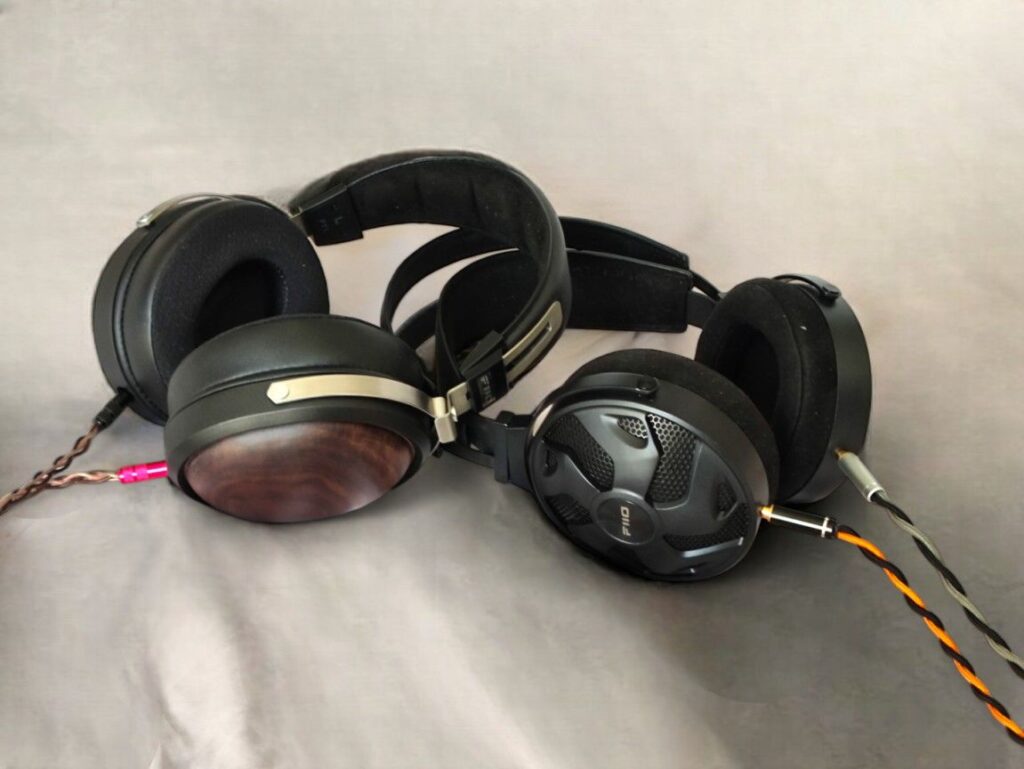
COMPARISONS
I compared the two headphones using the suede pads on the FT3 and the stock pads on the FT1. My amplifier was the Topping A90, my source was the RME ADI-2 DAC FS.
Viuxtemps: Violin Concerto No.4 II by Hilary Hahn
With this delicate piece, the FT3 sounds warmer and thicker, the FT1 has a thinner and more brittle sound. Both are great.
Army of Me by Björk
They are relatively similar but again the FT3 is lusher, the FT1 slightly crisper and sharper cut. The FT1 has more prescice imaging, but the FT3 does not feel less detailed.
Ragged Wood by Fleet Foxes
With this quite busy sounding track, the FT3 has a very nice and lush yet detailed presentation. The FT1 is crisper, with less smoothness without feeling more detailed.
World Town by M.I.A.
The heavy bass on this track is very good with the FT1, there’s great separation and image depth is impressive. This track can become a bit too sharp and sibliants can be harsh, but it is not a problem with either headphone. The FT3 is quite similar, but lacks some of the depth and fullness in the bass, and the imaging is more diffuse.
Never Forget the Good Ones by Solveig Slettahjell
On this slow, female vocals-based track, the FT3 is smooth, lush and delicate. The FT1 offers better separation and imaging, however, I also find it more detailed sounding on this track.
Vivaldi 4 Seasons, Winter I by The Norwegian Chamber Orchestra
Again, the FT1 delivers a superb presentation with the a well-balanced tuning, great separation and imaging, and a high detail level. The FT3 delivers a very similar presentation, with a more open soundstage but less precise imaging.
Compare Manuel by Vincente Amigo
The FT3 sounds great. It’s lusher and fuller sounding than the FT1, which on the other hand comes off as even more prescice, especially in terms of imaging.
It Should Be Obvious by Jørn Øien Trio
Moving on with some snappy and dynamic improv jazz, the FT1 sounds fantastic. It’s got tight and punchy percussion and bass, and a gentle touch to the piano. The FT3 sounds remarkably similar, however, only with a slightly more open and wider soundstage.
Scratch Bass by Lamb
The FT3 sounds very nice. It’s well-balanced, the bass is powerful and tight, yet not with too much quantity. The treble is clear but not too crisp. Moving over to the FT1, however, the bass is more punchy, slightly fuller, there’s more space between instruments and better image depth.
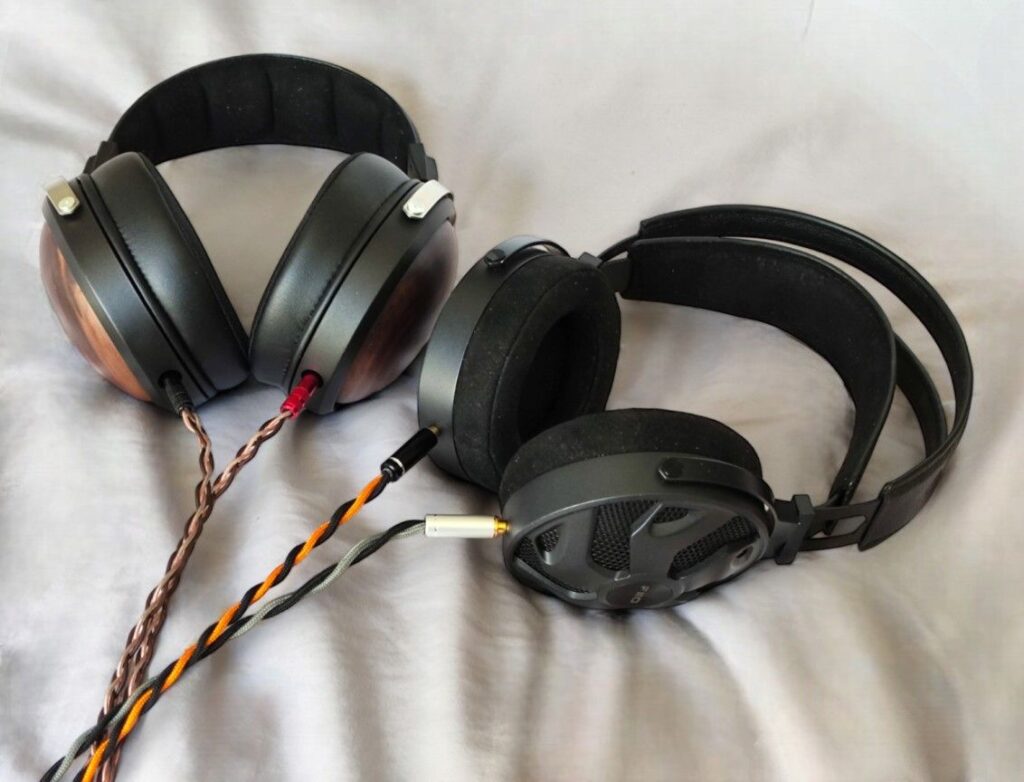
WRAPPING IT UP
Sound Signature
Despite differences in driver design and housing construction, the FT3 and FT1 share a similar sound signature. Both headphones offer a relatively neutral tone, with a slight tilt toward a darker, lusher presentation rather than a brighter one.
Treble
The treble is present and clear with both. It is quite similarly tuned and comes off as equally detailed.
Midrange
The midrange on the FT3 is slightly lusher and fuller compared to the FT1, though the difference is not huge. Both headphones offer excellent detail in the midrange.
Bass
Although the FT3 has good bass, the FT1 mostly is a tad better, with slightly better definition and extension. Depending on the track, the FT1 also offers more bass quantity.
Soundstage and Imaging
The FT3 features a more open soundstage, with greater width and height. In contrast, the FT1 provides better depth and generally even better instrument separation and imaging.
Detail, Dynamics, and Timbre
The level of detail is for the most part comparable, except for the bass, where the FT3 doesn’t do quite as well as the extraordinary FT1. Both are quite dynamic sounding, but when there is a difference, it usually is in the favor of the FT1.
When it comes to timbre and tonality, however, I more often than not find myself preferring the FT3. It is generally more organic and even more natural sounding. The difference is not very large, and I have no problem enjoying the tonality of the FT1, but especially the midrange is slightly fuller and even better balanced on the FT3.
AMPLIFICATION
An advantage of the higher impedance of the 350-ohm FT3 is that high-impedance headphones normally sound great with amplifiers with high output impedance amps, especially OTL tube amps. It certainly sounds great with my Woo WA2, better than my solid state options.
Using low-impedance headphones on OTL amps can give mixed results, sometimes making the sound a bit dampened and muffled. However, for some reason, the 32-ohm FT1 sounds great with the WA2.
I tried both headphones with the Schiit Magni Heretic, Monolith THX AAA 887, Mytek Liberty Amp, the Bryston BHA-1, and the Woo Audio WA2 OTL tube amplifier. I prefer the Bryston and WA2 with both, although the rest does a very good job, with only minor differences.
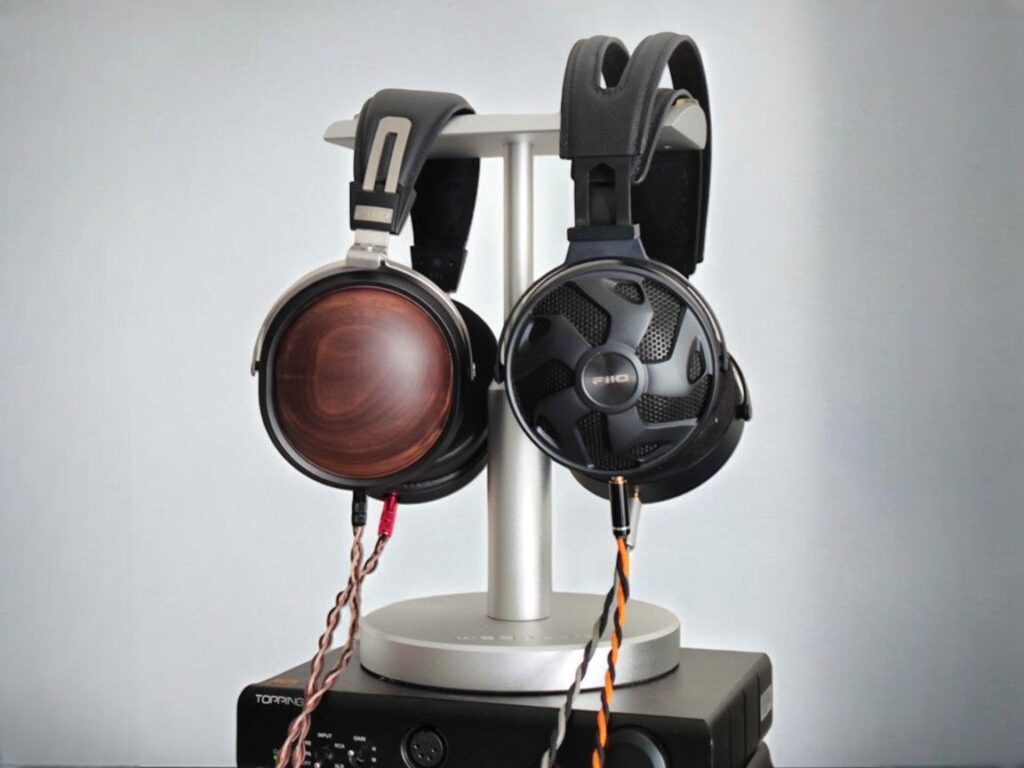
CONCLUSION
With the FT3, FiiO made a notable debut in the headphone world, delivering excellent audio quality at a good price. The FT1 builds on this success and their experience, which in many cases gives even better performance at a lower price point – despite the fact that it’s a closed-back. FiiO deserves massive credit for making innovations that bring prices down and not up.
One common critique of the FT3 has been its design, which some users haven’t found appealing. Personally, I find it to look good, better in real life than on the pictures. However, the FT1 adopts a more traditional design language, which I believe is an improvement. Additionally, the change in pad mounting allows for easier pad rolling, which I highly appreciate.
I find both of these headphones to be excellent choices. The FT3 is a great open back, high-impedance headphone—at a good price. The FT1 is a superb closed-back headphone at an even better price.
You can support this site by using any of our affiliate links to make purchases of items you might want or need.
Any purchase you make on Amazon or Linsoul with any of our affiliate links will give us a small provision at no cost to you.
We only get a provision for items that are not returned, so there’s no incentive for us to recommend something that’s not good.
Linsoul : Headphones, Earbuds, Wireless Earbuds, Desktop DAC/AMP, Portable DAC/AMP, Digital Audio Players,
Amazon: Headphones, IEMs, Headphone Amplifiers, Home Audio or Anything else.
.
If you enjoyed this article or other content on The Headphoneer, you might consider leaving a small donation to keep this website up and running. No donation is too small. Thanks for supporting us!
If you like our work please follow us on Instagram, Facebook and Twitter , it will help us grow. Sharing is caring 🙂


